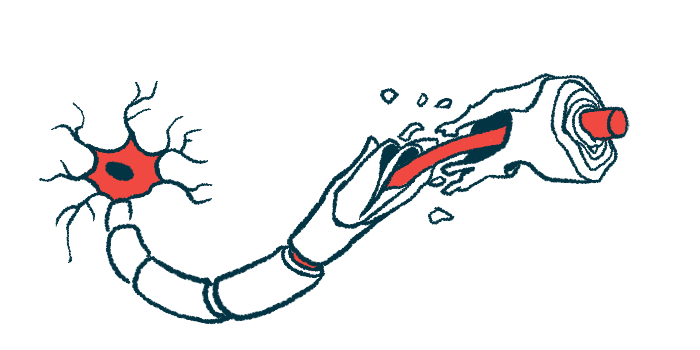New MRI technique effectively maps myelin content in MS brains
System may help assess disease progression, evaluate treatment effectiveness

A new system that can use MRI scans to effectively measure myelin content in brain tissue may help assess the progression of multiple sclerosis (MS) and evaluate the effectiveness of treatments.
The technique was described in “Quantitative magnetic resonance mapping of the myelin bilayer,” which was published in Science Advances.
“Noninvasive imaging of myelin is an unmet need in clinical practice and could benefit diagnostic workup of patients with MS as well as facilitate more personalized therapy, not least because the first remyelinating drugs are expected to be approved for MS therapy in the coming years,” its researchers wrote. “The myelin bilayer mapping technique pursued in this work holds the potential to fill this gap.”
MS is caused by inflammation in the brain and spinal cord that damages the myelin sheath, resulting in demyelination, or a loss of myelin. The myelin sheath, also called the myelin bilayer, is a fatty covering that wraps around nerve fibers and helps them send electrical signals, a bit like rubber insulating a metal wire. In MS, demyelination causes problems with neurological signaling, leading to disease symptoms.
Tracking myelin damage could be invaluable for assessing the progression of MS and testing the effectiveness of treatments, especially as new therapies are being developed that seek to promote myelin repair, or remyelination.
Measuring myelin in MS
Traditional MRI — the imaging technology usually used to track MS brain damage — isn’t sensitive enough to detect changes in myelin, leading researchers here to explore a new technique to better capture the myelin sheath. An MRI uses powerful magnets and radio waves to image water molecules inside the body. The new technique picks out water molecules trapped between the myelin sheath and nerve fibers, allowing a measure of myelin integrity.
The researchers analyzed nine brain tissue samples from six people with progressive forms of MS who had died and used their MRI-based technique to image myelin in them. Standard tissue analyses were also performed to definitively measure myelin content in the samples and then compared to see if the imaging technique had accurately captured myelin.
The imaging technique was found to be reasonably good. Along with showing changes in lesioned areas with obvious signs of damage, it also detected changes in the myelin sheath in parts of the brain that appeared undamaged. These changes could be reliably detected by using a non-MS brain sample to normalize the results, the researchers said.
“Based on the high myelin specificity achieved in both nonpathological and MS brain tissue and the reasonable quality of the myelin bilayer maps in tissue … we consider our myelin bilayer mapping technique sufficiently validated for translation to” testing in living animals, the researchers wrote, adding making that translation to living subjects will reveal new technical challenges so this study’s use of brain samples may help provide guidance to overcome future issues.







